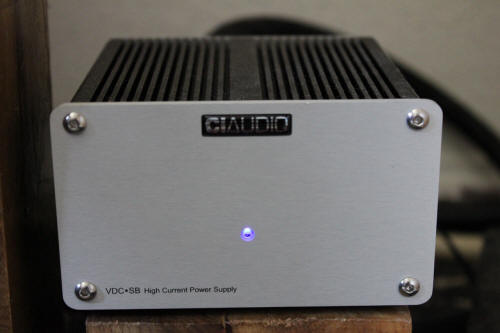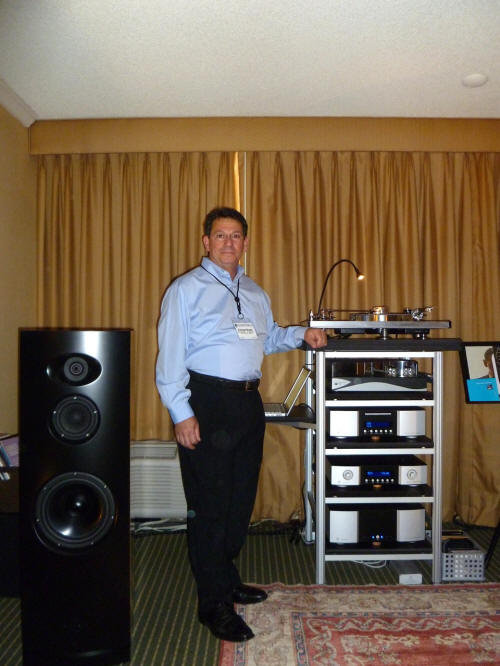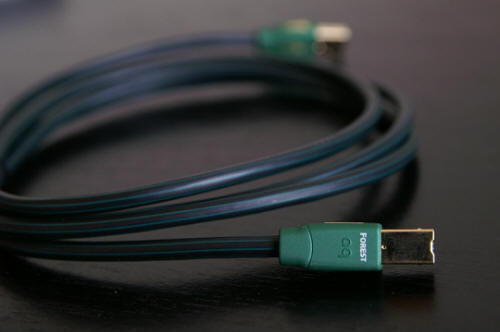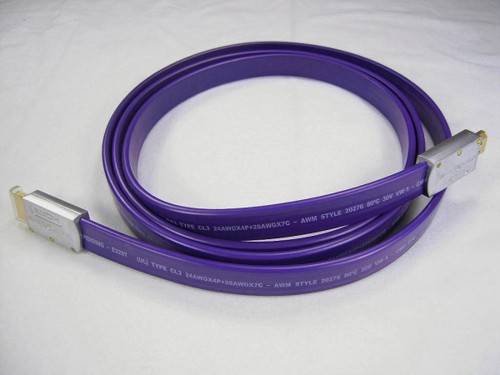|
You are reading the older HTML site
Positive Feedback ISSUE 61
The Logitech Squeezebox Touch Enhanced Digital Output
Applet and More!
I make no secret of the fact that I think the Logitech Squeezebox Touch is an amazing, life changing audio product. I have been using a Squeezebox for 5 years now. I upgraded to the Touch a year ago and have never looked back. While there are a few other products similar to the Squeezebox Touch, none, in my opinion can approach its value proposition when you take a look at its performance, feature set, and price, which, retail is $299. Street prices are lower. I own two Touch units and I paid $225 for my second one from Amazon. Now, I understand that many audiophiles just won't take seriously a source component that costs less than a pair of interconnects, but the fact is, hearing is believing. To put this statement into context, I use my Squeezeboxes in two systems, one costing around $20,000, and the other around $12,000. But to be clear, to maximize the stock Squeezebox products, a high quality outboard DAC in needed, in my case, the Bryston BDA-1 in system one, along with the Musical Fidelity V-DAC II in system two. I connect to the DACs with DH Labs and Kimber optical cables. I believe, after much experimentation, that the optical connection bests the coax out of the Touch. This is probably because optical does not pass on any internal noises inherent in the source. In repeated subjective listening comparisons, it was obvious that the highs were smoother, and the midrange was cleaner and more transparent with optical. Another factor that comes into play here is that it is fairly well known that while some DACs purport to be relatively immune to jitter, there is no DAC that I know of that rejects incoming noise. For those of you that may only be familiar in passing with the Squeezebox's basic capabilities, here is a brief overview. It has analog outputs, S/PDIF outputs in the form of coax and TosLink, and handles material up to 96kHz, 24-bit in virtually any format, including FLAC, AIFF, WAV, ALAC, mp3, etc. It connects to your home network via WiFi or Ethernet. It also allows you to connect a hard drive or thumb drive directly into its USB slot for direct playback. Essentially, those are the basics. In addition, it is an internet radio tuner and connects to various free and premium music streaming services. All of this is possible with the installation of Logitech Media Server on your computer or NAS. The popularity of the Squeezebox Touch has spawned a cottage industry seeking to produce improvements to the stock Touch's performance. The most obvious upgrade is an external linear power supply to replace the unit's wall-wart power. There are a number of companies that provide power supplies, but and I chose the one made by Channel Islands Audio, the, VDC-SB, which sells for $260. I felt it made a subtle, but clearly audible difference.
Probably the best known tweak is absolutely free of cost, developed by a gentleman known as Soundcheck. His Touch Toolbox 3.0 can be found here: http://soundcheck-audio.blogspot.com/. There are other various mods and tweaks floating around the internet, but as always, anything not specifically endorsed by Logitech you do at your own risk. Soundcheck's methods involve hacking the firmware, which shuts off the Touch's screen, kills the analog outputs and the WiFi, and a host of other rather sophisticated internal modifications. All who have followed Soundcheck's instructions have raved about the results. I confess to not having tried Toolbox 3.0 myself, as I really like using the Touch's screen and I do not have an iDevice to navigate the unit headless. Yes, it is true, I have not snorted Apple powder and I have no iPod Touch, iPhone or iPad, although I run Logitech Media Server on a 2nd generation Mac Mini. By the way, I should note that ALL of Soundcheck's mods are reversible to factory default settings. Back in April, I heard about a fellow known as "Triode" who has developed an applet for the Touch that allowed, after a five minute download and installation process, for some significant changes in the stock Touch. First, it allows shutting down the analog outputs, secondly, it allows audio to be outputted via the USB port, and most amazingly, it transformed the Touch into a streamer that outputs all sample rates up to 192kHz! The Stock Touch does up to 96kHz. These upgrades are all available via a few clicks of the remote or touch screen! Triode's applet is known as the Enhanced Digital Output. You can read about the applet, and find installation instructions here. There are a few minor limitations on the higher sample rates. 176.4 and 192kHz are limited to the FLAC format, for now. I say for now because at the time of this writing Triode has already updated the applet several times. This is no issue for me since FLAC is my preferred file format. Another quirk is that if you want to explore using a USB DAC with the Touch, it must either be hooked up to a high speed hub, or it must be used with a 192kHz capable high speed DAC. I decided to test all facets the Enhanced Digital Output for this piece and I purchased several 176.4 and 192kHz recordings from HDtracks.com. I also used the Lindemann USB-DAC 24/192 that I reviewed a few months ago. I had since returned it to the US importer, One World Audio, however, Jonathan Josephs of One World was gracious enough to lend it to me for this piece. By the way, Jonathan is very knowledgeable, and I believe has struck gold with the entire Lindemann line, which I found impressive at several shows, including at this year's T.H.E. Show Newport.
The Lindemann USB-DAC 24/192, as the name implies has a high speed, asynchronous, 192kHz capable USB input, as well as coax and optical S/PDIF inputs. The Lindemann DAC was a perfect candidate for me to use to listen to the Touch's USB output, and the price, $1100 is very reasonable for a product with its pedigree and features. It is probably also approximately the budget for an outboard DAC for a serious Touch owner. Activating the applet activated the USB output of the Touch and connecting it to the Lindemann was as easy as selecting it off the Touch's Digital Output menu. Over the course of several weeks of listening it was obvious the USB output offered up legitimate high end sound. However, I really had a hard time deciding whether it paid dividends over my usual optical connection, Connecting via a Kimber Opti-1, the Touch/Lindemann combination was also excellent, as I noted in my original review.
During the time I had the Squeezebox connected via USB to the Lindemann, I also experimented with different USB cables. I first tried the generic cable generously supplied with the Lindemann, then a $28 Audioquest Forest, and a $45 Wireworld Ultraviolet. The Wireworld is a bit unique in that is a flat cable with the data and power leads isolated in the cable, which is one of Wireworld's big selling points. By the way, the Forest and Ultraviolet are the entry level USB cables from Audioquest and Wireworld. Both cables were an improvement over the generic USB cable, with the biggest differences being in areas of bass clarity and midrange resolution. The differences were not night and day, but easy to hear.
The final piece of the puzzle in Squeezebox Touch experimentation and tweaks for me was changing the location of where my FLAC files are decoded from the Touch itself, to the server, that is, my Mac Mini. The theory behind this is that the computer has way more processing power than the Touch, and relieves the Touch of having to this critical step of unpacking the codec. I have resisted doing this until now as a fully decoded file sent through your network is a much larger and more taxing on the resources of the network. After changing the settings to server decoding, I heard a clear improvement in dimensionality, and overall more organic sound. There was not a single dropout or hitch. The only roadblock I hit was when I tried to play back 176.4 or 192kHz files. They played at about 10% of the correct playback speed. Switching the settings back to having the Touch unpack the FLAC files allowed for correct playback—so for 90% of my music collection, having the computer decode the files will be my permanent setting. To conclude, the Logitech Squeezebox is an affordable, ridiculously versatile streamer, file player, and internet radio tuner. With a decent DAC and digital cable, in stock mode, it is already a giant killer. With an external power supply and some of the tweaks discussed above, in my humble opinion, you have a digital source component that rivals many up market five figure solutions.
|




